
|
|

|
|
|
Water Births...
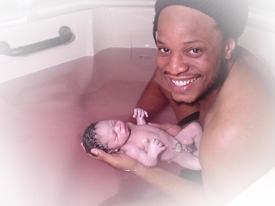

What are the views about water birth?
Hospitals are more cooperative today than ever before as doctors and midwives begin to see the benefits of allowing women to make their own choices.
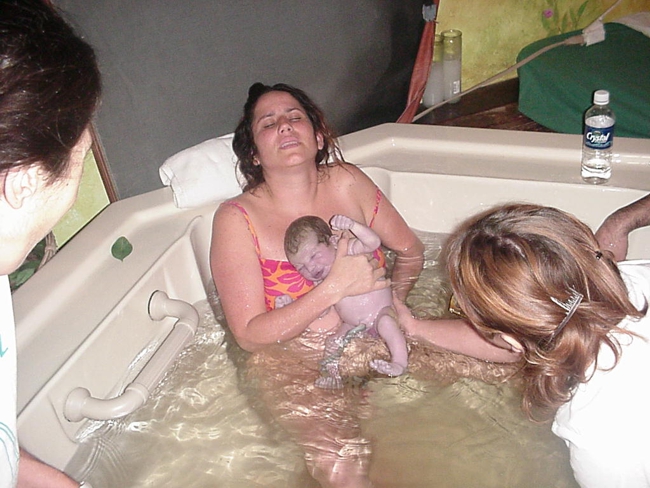
Water birth profoundly demonstrates that a woman is empowered by "giving birth," and not "being delivered". Many health care providers are seeing women take charge
of their birth experiences and welcome this attitude and do what they can to facilitate a gentle birth. But others are still "locked into" the medical technological
model of birth and have a harder time being convinced of the efficacy and safety of water birth, it is still considered to be an alternative method of birth and
therefore you should understand the risks and benefits before deciding to on a water birth. As couples become more informed of their options, they are assuming more
responsibility for their own birth experience.
What prevents baby from breathing under water?
There are four main factors that prevent the baby from inhaling water at the time of birth:
- 1. Prostaglandin E2 levels from the placenta, which causes the slowing down or stopping of the fetal breathing movements. When the baby is born and the Prostaglandin level is still high, the baby's muscles for breathing simply don't work, thus engaging the first inhibitory response.
- 2. Babies are born experiencing mild hypoxia or lack of oxygen. Hypoxia causes apnea and swallowing, not breathing or gasping.
- 3. Water is a hypotonic solution and lung fluids present in the fetus are hypertonic. So, even if water were to travel in past the larynx, they could not pass into the lungs based on the fact that hypertonic solutions are denser and prevent hypotonic solutions from merging or coming into their presence.
- 4. The last important inhibitory factor is the Dive Reflex and revolves around the larynx. The larynx is covered all over with chemoreceptors or taste buds. The larynx has five times as many taste buds as the whole surface of the tongue. So, when a solution hits the back of the throat, passing the larynx, the taste buds interprets what substance it is and the glottis automatically closes and the solution is then swallowed, not inhaled.
For a more complete description, please read Barbara Harpe's Waterbirth Basics
What is the temperature of the water?
Water should be monitored at a temperature that is comfortable for the mother, usually between 95-100 degrees Fahrenheit. Water temperature should not exceed 101
degrees Fahrenheit as it could lead to an increase in the mother's body temperature which could cause the baby's heart rate to increase. It is a good idea to have
plenty of water to drink and cold cloths for the mother's face and neck. A cool facial mist from a spray bottle is a welcome relief for some mothers as well. The
idea is that the warm waters of the pool will feel like the waters of your uterus to the baby. Moms who deliver in the water believe that this allows the transition
to the outside world to be less traumatic for their babies.
How much does a waterbirth cost?
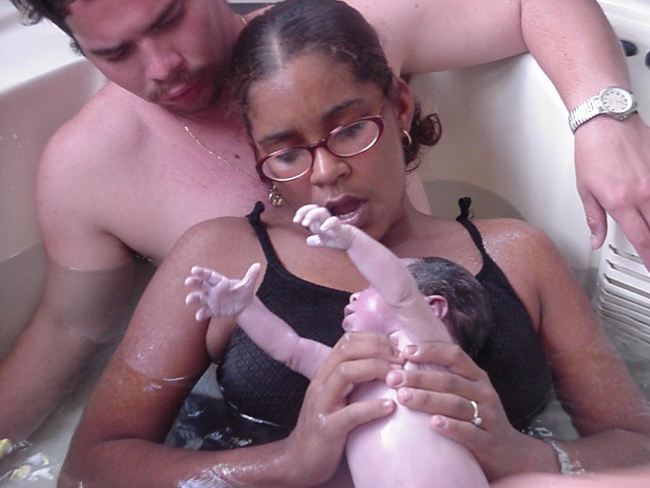
If you were to rent a portable pool for either home or hospital birth, it usually could cost about $300 to $500, which includes the rental fee, shipping both ways,
and all the extras that you might need. Some insurance companies do reimburse for the expense of the pool rental. If the hospital/ birth center has permanent birth
pool equipment, ask about the protocols for usage and utilize the services if they are available during labor or birth. It really doesn't matter if the baby was
born in the bath or on the bed - it is still a vaginal birth.
How long is baby in the water after the birth?
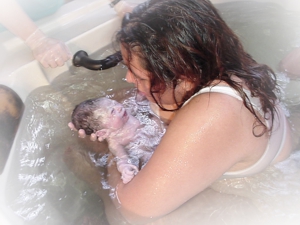 Here in the US, practitioners usually bring the baby out of the water within the first ten seconds after birth. There is no physiological reason to leave the baby
under the water for any length of time. There are several water birth videos that depict leaving the baby under the water for several moments after birth and the
babies are just fine.
Here in the US, practitioners usually bring the baby out of the water within the first ten seconds after birth. There is no physiological reason to leave the baby
under the water for any length of time. There are several water birth videos that depict leaving the baby under the water for several moments after birth and the
babies are just fine.
Physiologically, the placenta is supporting the baby with oxygen during this time though it can never be predicted when the placenta will begin to separate causing
the flow of oxygen to baby to stop. The umbilical cord pulsating is not a guarantee that the baby is receiving enough oxygen. The babies born in water are often
calm and cry less than babies born in air. The safe approach is to remove the baby, without hurrying, and gently place him into his mother's arms.
When should I get into the water?
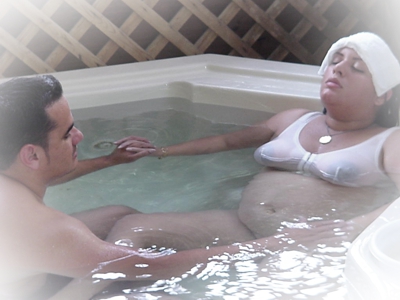 A woman should be encouraged to use the labor pool whenever she wants. However, if a mother chooses to get into the water in early labor, before her contractions are strong and close together, the water may relax her enough to slow or stop labor altogether. That is why some practitioners limit the use of the pool until labor patterns are established and the cervix is dilated to at least 5 centimeters.
There is some physiological data that supports this rule, but each and every situation must be evaluated on its own.
A woman should be encouraged to use the labor pool whenever she wants. However, if a mother chooses to get into the water in early labor, before her contractions are strong and close together, the water may relax her enough to slow or stop labor altogether. That is why some practitioners limit the use of the pool until labor patterns are established and the cervix is dilated to at least 5 centimeters.
There is some physiological data that supports this rule, but each and every situation must be evaluated on its own.
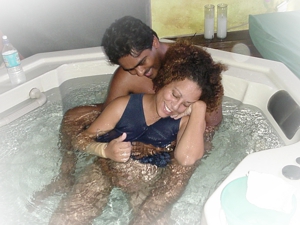 Some mothers find a bath in early labor useful for its calming effect and to determine if labor has actually started. If contractions are strong and regular, no
matter how dilated the cervix is, a bath might be in order to help the mother to relax enough to facilitate dilation. Being in the warm water can make it easier
for the mom to cope with the pain of contractions due to the soothing effect that it creates, therefore allowing her body to release more endorphins, which are the
hormones that help you cope with contractions.Therefore, it has been suggested that the bath be used in a "trial of labor" for at least one hour and allow the mother
to judge its effectiveness.
Some mothers find a bath in early labor useful for its calming effect and to determine if labor has actually started. If contractions are strong and regular, no
matter how dilated the cervix is, a bath might be in order to help the mother to relax enough to facilitate dilation. Being in the warm water can make it easier
for the mom to cope with the pain of contractions due to the soothing effect that it creates, therefore allowing her body to release more endorphins, which are the
hormones that help you cope with contractions.Therefore, it has been suggested that the bath be used in a "trial of labor" for at least one hour and allow the mother
to judge its effectiveness.
Contact Us | Site Map
|
|
|
|